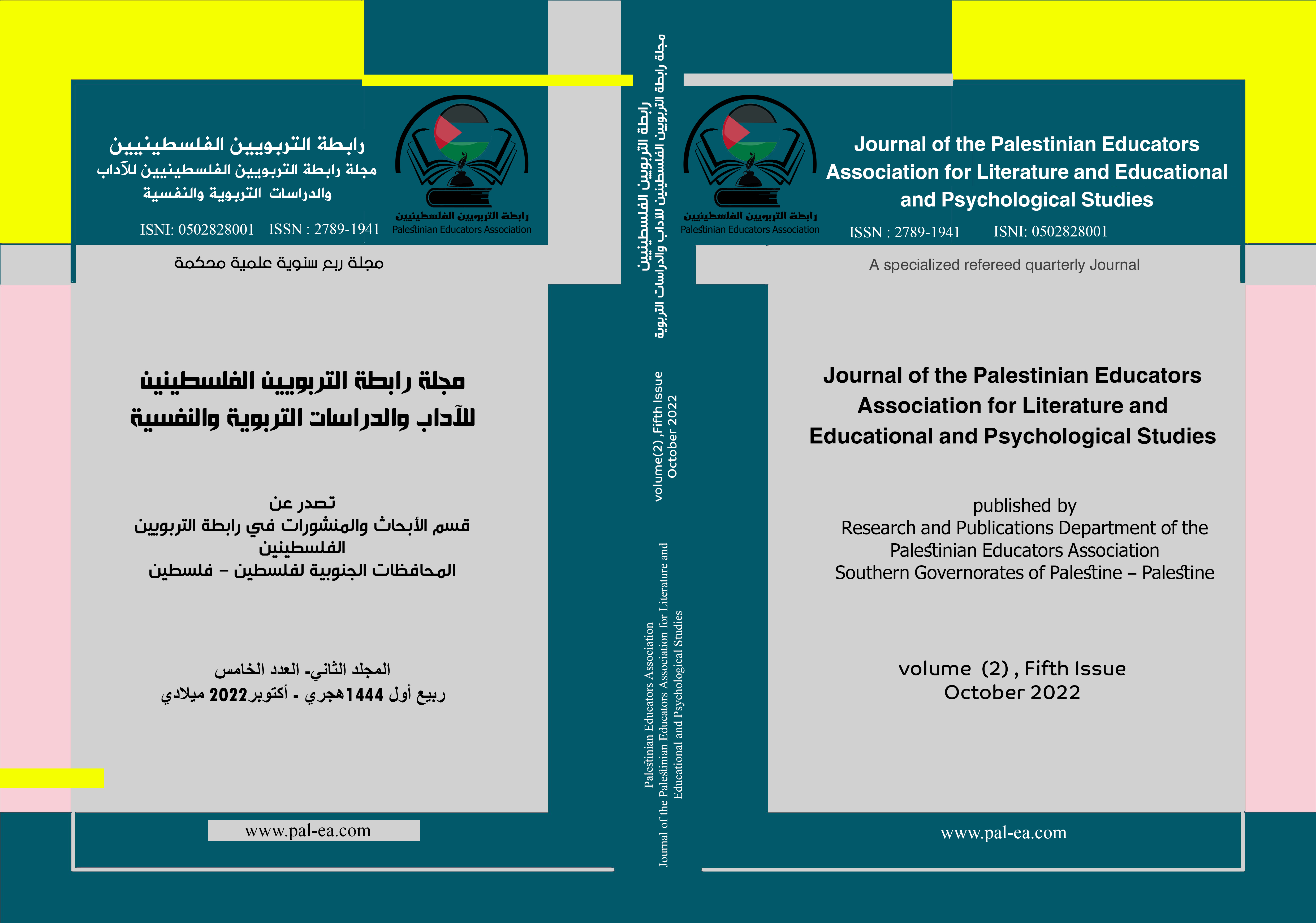Developing the Consensual Assessment Technique as a Modern Trend for the Alternative Evaluation of Giftedness and Creativity in the Kingdom of Saudi Arabia
DOI:
https://doi.org/10.69867/PEAJ057Keywords:
gifted, creativity, performance evaluation, achievement portfolio, self-evaluationAbstract
The alternative assessment for the gifted and creative sheds light on modern trends in discovering and evaluating the gifted, adopting multiple criteria, and based on real performance as its basis. The current study aims to establish a theoretical framework for the alternative assessment for the gifted and creative that addresses its objectives and characteristics and compares it with traditional methods in addition to the tools and methods of alternative assessment. The study aims Also, basically, to codify the harmonic assessment technique to evaluate the products of gifted and creative students and prepare them to be suitable for use in the Kingdom of Saudi Arabia. The current study seeks to clarify the concepts associated with alternative assessment, its characteristics and methods, in addition to its advantages and disadvantages, in its theoretical aspect. As for the practical aspect, the current study seeks to codify the harmonic assessment technique as one of the Alternative evaluation methods for the products and innovations of gifted and creative students, and evaluation of the harmonic evaluation technique.
Downloads
References
المصادر والمراجع
أولاً: المراجع العربية:
القفاص، وليد. (2011). التقويم والقياس النفسي والتربوي اتجاهات معاصرة – برامج تدريبية – نماذج لإعداد وتعريب الاختبارات، المكتب الجامعي الحديث. مصر.
أرمسترونج، ثوماس. (2006). الذكاءات المتعددة في غرفة الصف. دار الكتاب التربوي: الدمام).
الخليلي، خليل. (1998). التقييم الحقيقي في التربية. مجلة التربية. (126)،118.
زيتون، حسن. (2003). أصول التقويم والقياس التربوي المفهومات والتطبيقات. الدار الصولتية: الرياض.
سرايا، عادل. (2001). التقويم الحقيقي. مجلة التدريب والتقنية. (74)،40.
علام، صلاح الدين. (2000). التقويم التربوي البديل. دار الفكر التربوي: القاهرة.
مهيدات، عبد الحكيم ؛ المحاسنة، ابراهيم. (2009). التقويم الواقعي. دار جرير، عمان.
المراجع العربية الإنجليزية
Al-Qaffas, W. (2011). Psychological and Educational Assessment and Measurement: Contemporary Approaches, Training Programs, and Models for Test Development and Localization (In Arabic). Modern University Office. Egypt.
Armstrong, T. (2006). Multiple Intelligences in the Classroom (In Arabic). Educational Book House. Dammam.
Al-Khalili, K. (1998). Authentic Assessment in Education. (In Arabic). Journal of Education, (126), 118.
Zeitoon, H. (2003). Principles of Educational Evaluation and Measurement: Concepts and Applications (In Arabic). Dar Al-Sawlatiya. Riyadh.
Sraya, A. (2001). Authentic Assessment. (In Arabic). Journal of Training and Technology, (74), 40.
Allam, S. (2000). Alternative Educational Evaluation (In Arabic). Educational Thought House. Cairo.
Mahaydeh, A. H., & Al-Mahasneh, I. (2009). Realistic Evaluation. (In Arabic). Jarir Publishing, Amman.
ثانياً: المراجع الأجنبية:
Baska, V.T. (2007). Alternative assessments with gifted and talented students. Waco, TX: Prufrock Press.
Birenbaum, M. and Dochy, F. (1996). Alternative Assessment of Achievements, Learning Processes and Prior Knowledge. Boston; Kluwer Academic Publishers.
Borland, J, H (2003) Rethinking gifted education, published by teacher college press. New York.
Bond, L.A. (1994): Critical Issue: Rethinking assessment and its role in supporting educational reform, North Central Regional Educational Laboratory.
Callahan, C.M. (2002). The ABCs of creating a performance assessment task and scoring rubric. Gifted Education communicator, 33(2), pp. 12-15.
Carson, S. (2006). Creative and Mental Illness. Invitational Panel Discussion Hosted by Yale's Mind matters Consortium, New Haven, CT.
Denham, A &Lahm, E.A(2001). Using technology to construct alternate portfolios of students with moderate and severe disabilities . Teaching Exceptional Children,33/5.
Hill, C. (2000). The progress profile: Constructivist Assessment in early childhood education. In A.L. Costa (Ed) Teaching for intelligence II (pp.211-230) Chicago: Skylight Publishing.
Lane, S., & Stone, C. A. (2006). Performance assessment. In R. L. Brennan (Ed.), Educational Measurement (4th ed.), (pp. 387-432). National Council on Measurement in Education & American Council on Education. Westport, CT: Praeger Publishers.
Lohman, D. F. (2005). The role of nonverbal ability tests in identifying academically gifted students: An aptitude perspective. Gifted Child Quarterly, 49, 111-138.
Runco, M.A., Illies, J.J., & Reiter- Palmon, R. (2005). Explicit instructions to be creative and original: A comparison of strategies and criteria targets with three types of divergent thinking test, Korean journal of thinking and problem solving, 15, pp.5-15.
Runco, M.A, & Dow, G.T. (2004). Assessing the accuracy of judgment of thinking and problem solving, 14, pp.5-14.
Schlepphege, J. (2010(. The Portfolio: An Alternative assessment method in the foreign language, Seminar paper, Grin. Pub.
Seidel, S. (2006). Project zero /Massachusetts school network. Retrieved December 13,2006, from http://www.pz.harvard.edu/Research/MSN.htm.
Shaklee, B.D., &Viechnicki, K. (1995). A qualitative approach to portfolios: the early assessment foe exceptional potential design, Journal for the Education of the gifted, 18, 156-170
Shivinina, L (2003) The international handbook on innovation, Elsevier science Ltd.
Wiggins, G. (1993). Assessing student performance: Exploring the purpose and limits of testing. New York: Jossey – Bass.
Downloads
Published
Issue
Section
License

This work is licensed under a Creative Commons Attribution-NonCommercial-ShareAlike 4.0 International License.
The Journal of the Palestinian Educators Association for Literature, Educational and Psychological Studies
E-issn: 2789-1941
Authors retain Copyright
The Journal of the Palestinian Educators Association for Literature, Educational and Psychological Studies allows Authors retain Copyright and grant the journal right of first publication with the work simultaneously licensed under a Creative Commons Attribution (CC-BY) 4.0 License that allows others to share the work with an acknowledgment of the work’s authorship and initial publication in this journal.
Provided they are the owners of the Copyright to their work, authors are able to enter into separate, additional contractual arrangements for the non-exclusive distribution of the journal’s published version of the work (e.g., post it to an institutional repository, in a journal or publish it in a book), with an acknowledgment of its initial publication in this journal.
Authors are permitted and encouraged to post their work online (e.g., in institutional repositories, disciplinary repositories, or on their website) prior to
and during the submission process.










